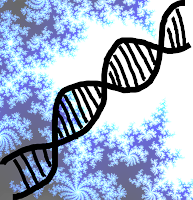Refusing Chromosome Fusion
Evolutionary Visigoths have raided real science and rational thought. A huge part of the problem is their own presuppositions, biases and barbaric scientific practices that have actually hindered scientific progress for a long time. For example, DNA. Using bad science, people have perpetuated the myth that "humans and chimps are 98 percent similar in DNA" (the number varies, depending on who you talk to). That has been refuted.
Then, using evolutionary presuppositions, the difference between the numbers of human and ape chromosomes was assumed to be due to "chromosomal fusion". This was "proved" because of sloppy science — the so-called fusion was in something they considered a "pseudogene". Why was it called a pseudogene? Because they could not see any evolutionary purpose for it, so it must not be important (not true, pseudogenes are actually very important). Once it was decided that DNA should be more completely sequenced, the problems with the chromosonal fusion began to be revealed. It does not exist.
Then, using evolutionary presuppositions, the difference between the numbers of human and ape chromosomes was assumed to be due to "chromosomal fusion". This was "proved" because of sloppy science — the so-called fusion was in something they considered a "pseudogene". Why was it called a pseudogene? Because they could not see any evolutionary purpose for it, so it must not be important (not true, pseudogenes are actually very important). Once it was decided that DNA should be more completely sequenced, the problems with the chromosonal fusion began to be revealed. It does not exist.
Humans and great apes differ in chromosome numbers—humans have 46 while apes have 48. The difference is claimed to be due to the “end-to-end fusion” of two small, ape-like chromosomes in a human-ape ancestor that joined in the distant past and formed human chromosome 2. This idea was first proposed by researchers who noticed that humans and chimps share similar chromosomal staining patterns when observed under a microscope. However, humans and chimps also have regions of their chromosomes that do not share common staining patterns.
Supposed proof for the alleged fusion came in 1991, when researchers discovered a fusion-like DNA sequence about 800 bases in length on human chromosome 2. However, it was unexpectedly small in size and extremely degenerate. More importantly, this new fusion-like sequence wasn’t what the researchers were expecting to find since it contained a signature never seen before. All known fusions in living animals are associated with a sequence called satellite DNA (satDNA) that fuses in one of the two following scenarios: 1) satDNA-satDNA or 2) satDNA-telomereDNA. (Telomeres are the regions at the end of chromosomes that contain thousands of repeats of the DNA sequence “TTAGG.”) The alleged fusion sequence contained a different signature, a telomere-telomere fusion, and, if real, would be the first documented case ever seen in nature.Go bananas for a few minutes and read the rest of "New Research Debunks Human Chromosome Fusion".
